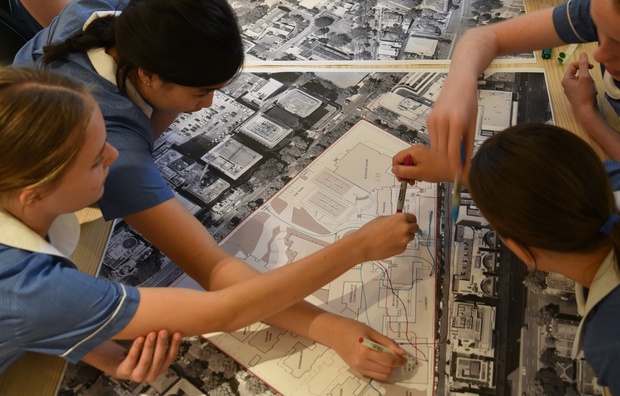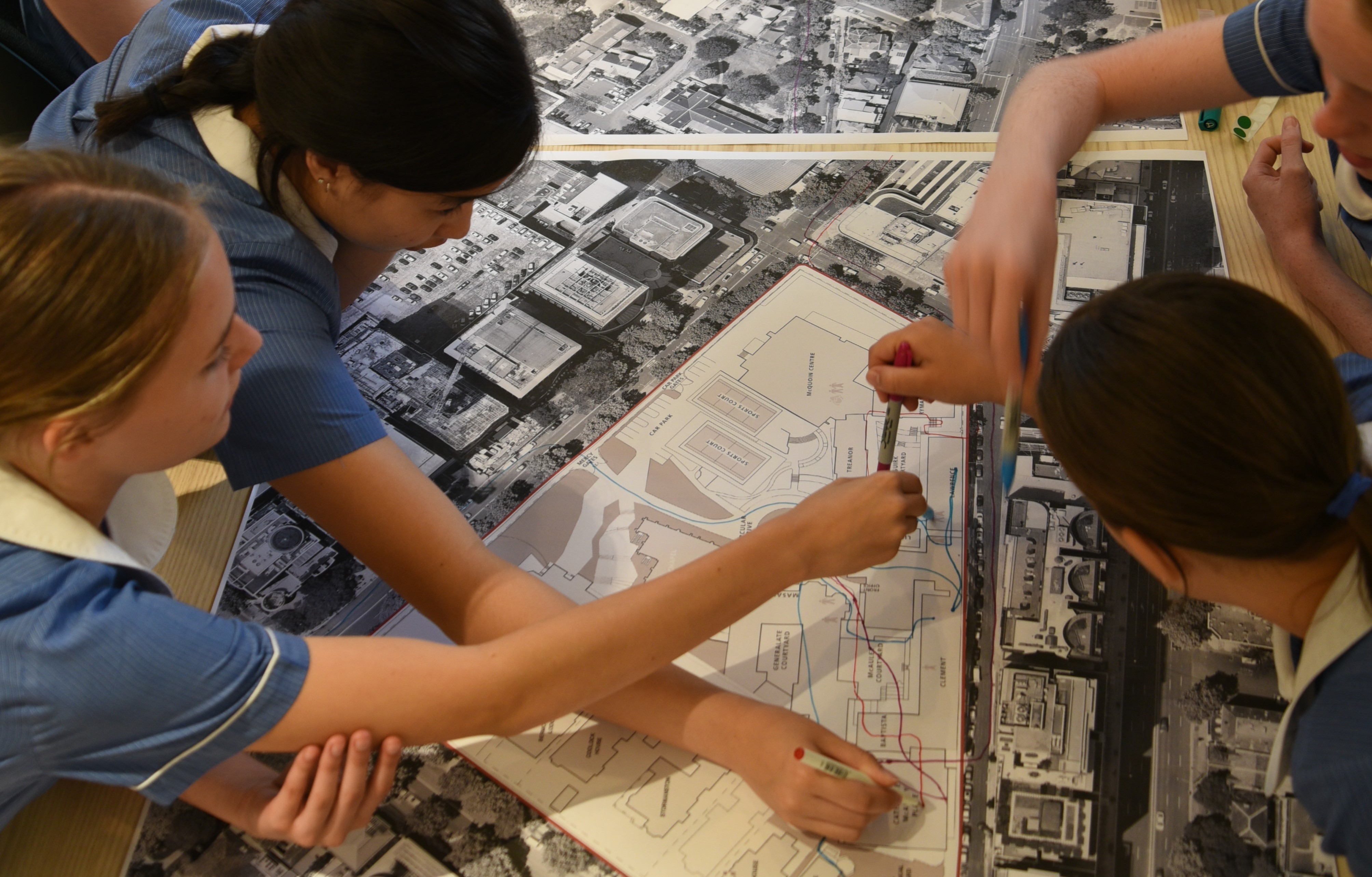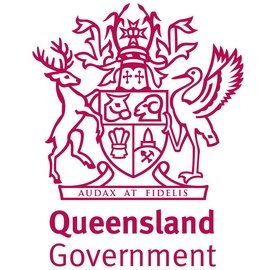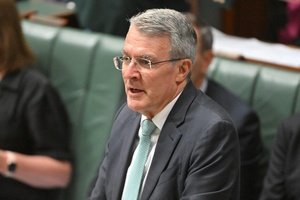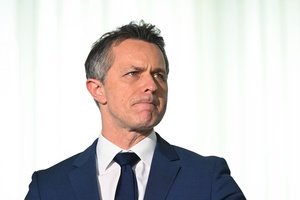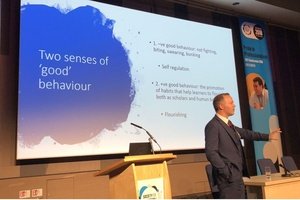Every school should also have a Vision for Teaching and Learning, a statement of the kind of learning, learners and pedagogy to which the school is committed.
There is a third visioning and planning document that should be linked clearly to the school’s strategy and learning vision, and that is the Master Plan.
Master Plans outline the vision for facilities and grounds development and aid the best possible decision-making about the use of precious school resources in support of student learning. They help to give a school community something to work towards and prevent short-term actions impeding long-term projects, for example, locating a new building on a space better designated for other uses in the longer term.
Yet too often, after a building project has been completed, Master Plans are consigned to a shelf and forgotten.
Master Plans are part of the cycle of continuous improvement
In tandem, the Strategic Plan, the Vision for Teaching and Learning and the Master Plan make up a trio of dynamic and visible processes involving continuous cycles of analysis, goal setting, planning, action and evaluation.
The Master Plan must intersect with the vision for learning so that planned facilities support the school’s specific approach to learning.
As the financial landscape for a school alters, so too, the master plan needs to be sufficiently flexible to adapt to changing priorities whilst retaining the underlying integrity of design.
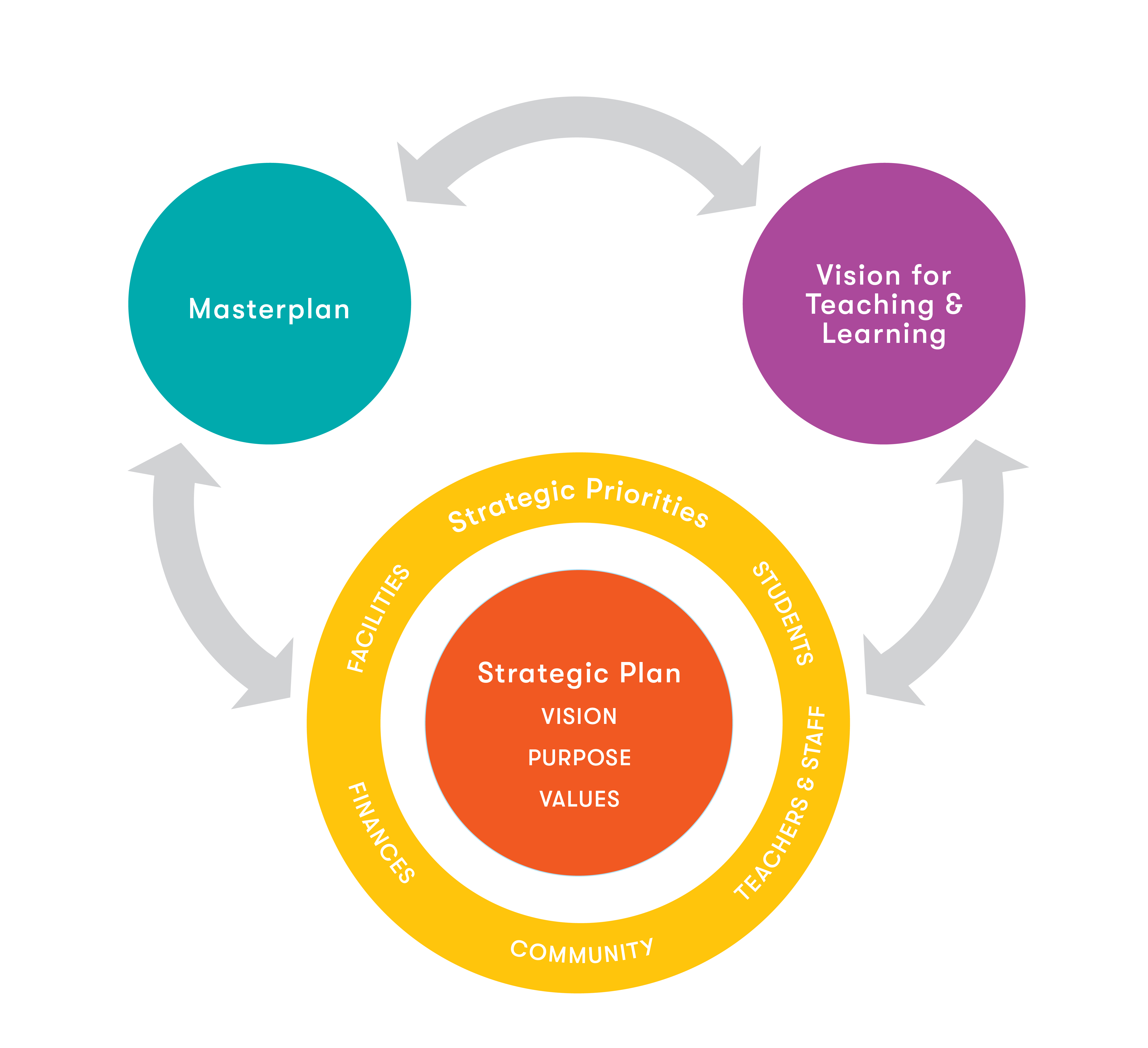
Relationship between a school’s Strategic Plan, Vision for Teaching and Learning and Master Plan.
As with the Strategic Plan, ultimately the Master Plan is a governance document. School principals will change, and new school leaders will have their own ideas about facilities development. However, continuity is important for planning and the allocation and expenditure of resources.
Knowledge of, and commitment to the Master Plan can be embedded into school governance and management practice by making it an element of the Strategic Plan and included as part of the review cycle.
Keeping the Master Plan relevant, visible and part of the narrative of a school is a leadership responsibility. Enabling accessibility and ownership of the Master Plan could be made easier by having a one-page graphic summary of its key purpose and elements.
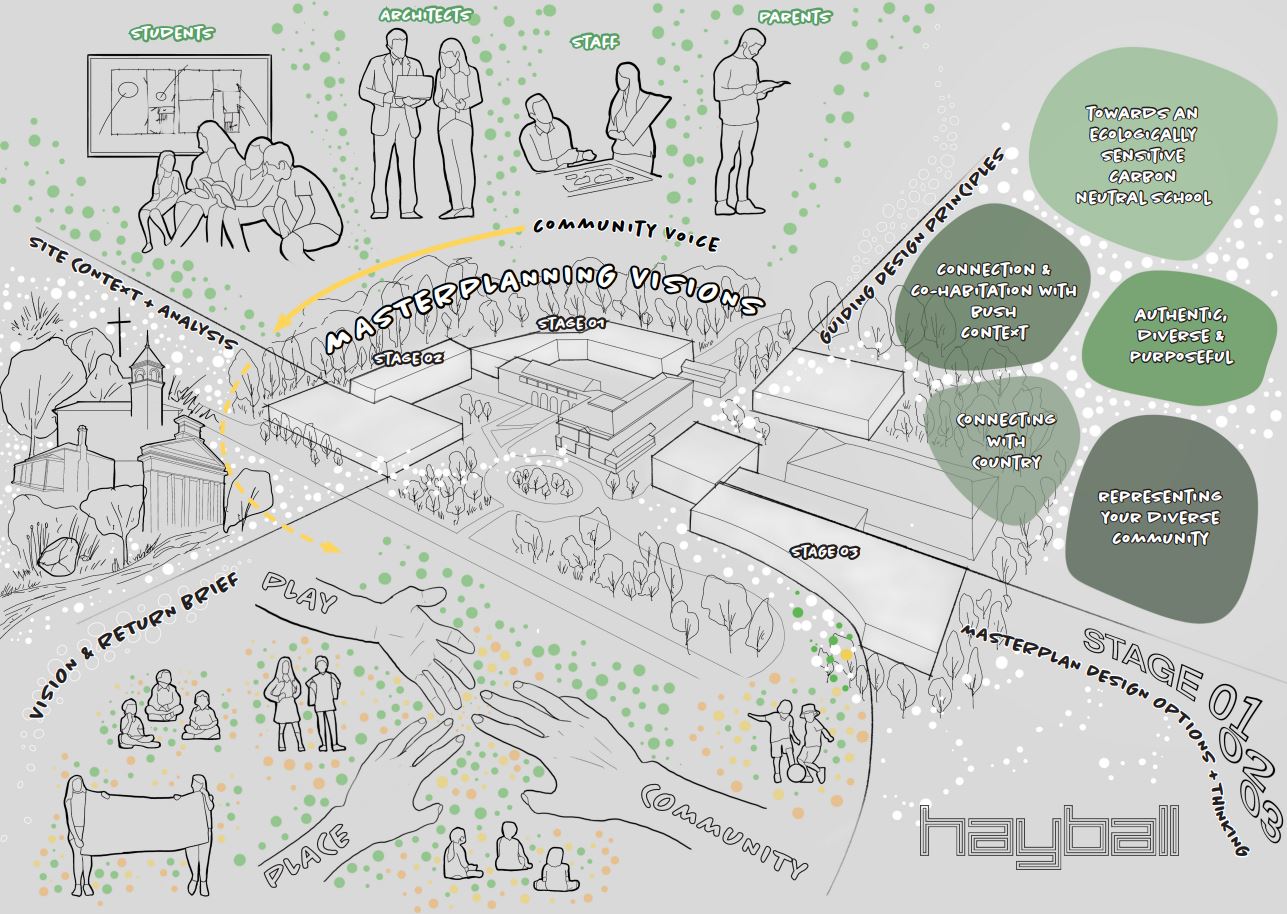 Example of a one-page graphic visualisation summarising a school’s Master Plan.
Example of a one-page graphic visualisation summarising a school’s Master Plan.
The many stakeholders of a school
The traditional “top down” approach to master planning starts in the boardroom where the leadership team plays the biggest role. More commonly we are now seeing the effectiveness of involving school staff, students and the broader school community.
Importantly, we are now witnessing this accomplished in ways that deeply engage all to elicit profound insights that inform future directions and planning responses. Master planning should involve everyone affected by the consequences or who can contribute value to the process or outcomes.
This extensive consultation and collaboration process is the foundation for a successful, functional and sustainable Master Plan.
This is also the time when the school – and all its stakeholders – can have the most impact. It is a relatively short moment in the life of a project when key decisions are made on planning, budget, aspirations and vision.
In practical terms, it is the only time when so many people and their many perspectives can truly combine to contribute to the formation of strategies, planning and the direction and substance of projects.
 School master planning workshop with students. PHOTO: Hayball Architects.
School master planning workshop with students. PHOTO: Hayball Architects.
Synthesizing inputs can be challenging as stakeholders bring their different perspectives on education, planning and design.
These may include the motivations and foci of: board members with concerns about the future or seeking a legacy project; business managers weighing-up the substantial costs and pondering maintenance issues; teachers seeing opportunities to improve their teaching environments; students dreaming of better social spaces or a radically different “school”; and parents worried about return on investment.
These varied perspectives make the planning process complex, but if properly harnessed also enrich it and ensure the validity of the outcome.
An inclusive process for contemporary pedagogy
The numerous stakeholders will invariably embrace a broad spectrum of people, age brackets and perspectives. An artful planning process will engage constructively with multiple voices, evaluate inputs, reference them against the school’s Vision for Teaching and Learning and when accepted and endorsed, synthesize them into final planning strategies.
Ultimately, as investment into school facilities is for the long-term, plans need to support contemporary and evolving approaches to pedagogy whilst maintaining effective operation for current and future users of the school.
Evolution, transition and support need to be constant companions in any process of change.
It can be valuable to have an independent consultant with an understanding of both education and design to act as the bridge between the school and the architect. They will assist with some of the key questions to be sorted out early in the process:
- What is the desired approach to teaching and learning?
- What are the pedagogical considerations?
- What mix of learning modes should be available (eg. collaborative, didactic, blended, small group, solo)?
- What kinds of spaces do students favour?
- What kinds of spaces are needed to enable these ambitions?
Robust and collaborative processes to address these types of considerations will have the greatest impact on the design outcomes.
What should a Master Plan comprise?
Once complete, a Master Plan should reflect the school’s vision for the development of the school’s (physical & digital) infrastructure in relation to its organisation and pedagogical practices.
The Master Plan typically outlines plans for future new developments, as well as refurbishment or repurposing of existing facilities. It should include a framework for circulation around the school which helps guide the placement of connections between buildings, as well as the location of formal and informal play areas.
It should also reflect the school’s position in relation to environmental sustainability and how future developments should address this.
An effective masterplan will be one that is sufficiently flexible for changing needs and expectations, while addressing both immediate planning priorities and allowing for medium and longer-term planning.
When should we do a Master Plan?
Master planning should not be left until a school is in a financial position to build. This can lead to hasty and ill-considered decision-making that produces buildings others will have to live with for decades to come.
You might ask when should a Master Plan be developed? If you don’t already have one, the answer is now!
Even if you are not planning any building developments in the foreseeable future, there is benefit in reviewing existing school facilities to ask the fundamental question: how well do they work to enable the school’s vision for teaching and learning and changing pedagogy?
Every school should have a current Master Plan. It provides a physical vision in support of the Strategic Plan and positions the school to act swiftly upon opportunities that may arise through funding injections such as Government grants or bequests.
If your school suddenly finds itself in the position to be able to build, having a Master Plan will expedite the process of designing new facilities in keeping with the school’s values and beliefs - and located in the right place for the long-term!
Vicki Steer is an educational consultant with twenty-five years’ experience as an innovative Principal and educational leader in independent schools. Along with her practice as a leadership coach and mentor, Vicki draws on her strong record of introducing contemporary learning spaces, most recently serving as a judge for the 2021 Learning Environments Australasia Awards.
Richard Leonard is an Architect and Director of Hayball, a Fellow of the Royal Australian Institute of Architects and an Honorary Life Member of the Association for Learning Environments Australasia. For over thirty years Richard has focussed on translating contemporary teaching and learning philosophies into creative design responses.
Dr Fiona Young is a Studio Director at Hayball and member of the NSW State Design Review Panel. Fiona’s passion for contemporary education design led to her PhD research focussing on bridging the design and use of innovative learning environments.

